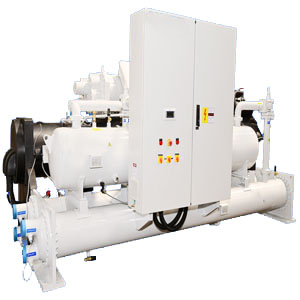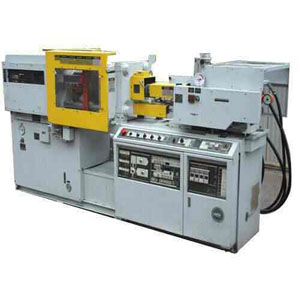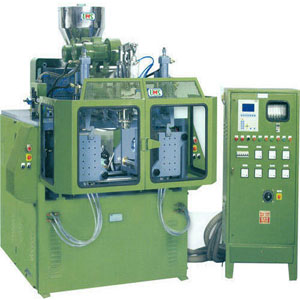What is a Chiller ? Chillers are mainly used in many different ways where chilled water or fluid rolls through process tools. Water chillers are used in a large number of various things including injection moulding, tool and die cutting, food and beverage, chemicals, lasers, machine tool, semi-conductors and many more.
The capacity of a industrial chiller is to move heat from one area to somewhere else. It is very normal to use water to move the hotness to and from the chiller, which might require the chiller to have a repository and pumping system.
Why use a Chiller
No industrial process, machine, or engine is 100% proficient, with heat being the most widely realize result of those shortcomings. This hotness isn\’t taken out, it will pass over the long haul causing reduced production, hardware closures, and surprisingly equipment failure. It is important to join cooling into industrial process cycle plan to stay away from these issues.
Using a chiller to give cooling has many advantages. A chiller gives accurate temperature and strain to your industrial cycle. Taking out temperature and other factors improves the cycle\’s advancement and streamlining, guaranteeing the best item. Basically, a chiller recycles the cooling water. The distribution limits the expense of water usage which can be costly.
How does a Chiller Work
In many processed cooling applications, a pumping system cools water from the chiller to the cycle. This cool water eliminates heat from the cycle and the warm liquid returns of the chiller. The process water is the means by which hotness moves from the cycle to the chiller.
What are the Uses of a Chiller
For a long time, businesses looked for ways of providing cooling to manufacturing processes. However, the fundamental climate control system has existed since the start of the twentieth Century. It didn\’t appear to be fit for giving adequate cooling to huge spaces and creation processes. Revelations toward the finish of the 20th century have made chilling hardware equipped for making temperatures for cooling processes for a wide ventures.
Uses of Chillers
Industrial
Industrial tasks make heat using erosion, powerful hardware, and heaters or broilers. To build the life expectancy of rock solid gear, a chiller cools fluid through a machine to keep up with proficiency and efficiency.
Workplace
On the manufacturing floor, temperatures can rise rather quickly when equipment is in full activity, which sets an unsatisfactory workplace. To secure wellbeing, industrial tasks use chillers to continue to work conditions at the appropriate temperature. With the expansion of an air taking care of unit, chillers can cool workspaces with chilled air similar as a climate control system. Depending upon the structure, air cooling chillers can be on the highest point of the structure or within the structure.
Plastic Manufacturing
Plastic is a very temperature delicate material that can be harmed by being very hot and should be appropriately cooled. The right cooling temperature of a form decides the nature of the end result. Chillers are utilized to give a cooling shower that keeps up with the nature of plastic items. In the expulsion cycle, a hotness exchanger isolates the water from the expulsion interaction from the cooling water.
Metal Plating
The metal plating industry utilizes high temperature electroplating or electroless in the plating system. The holding of a covering on metal produces outrageous temperatures requiring rock solid chillers to eliminate the hotness from the plated metal.
Food Production
The food business has severe guidelines in regards to the capacity temperatures of fixings and items. Chillers for the food business work similar as a customary cooling framework for food.
Power Generation
Power plants create a lot of hotness to deliver electrical power. Chillers cool parts and cycles by retaining the hotness they produce.
Medical Industry
Clinical hardware requires accuracy temperature control. X-ray scanners, CT scanners, and LINAC machines produce heat that must be taken out and controlled. Chillers give a steady wellspring of cool temperatures to guarantee the effective activity of basic gear.
Pharmaceutical
Drugs require the utilisation of chilled water in the assembling system and need exact temperature control. Chillers have the exactness and accuracy for the chilling system and can be focal cycle chillers or reduced interaction chillers. The four fundamental sorts of drug chillers are responding, screw driven, radiating, and ingestion.
Laser
Laser chillers are intended to cool laser hardware or laser processes. For a laser to perform at top productivity, it needs to keep an ideal frequency. CO2, high power exciters, and particle lasers must be exact and precise. They rely upon a chiller water cooling framework.
Kinds of Chillers
There are two kinds of condensers mainly used in chillers
- air-cooled and
- water-cooled chillers
An air-cooled chiller utilises surrounding air to cool and gather the hot refrigerant gas down to a fluid. It very well may be situated inside the chiller or can be somewhat situated outside, at the end of the day it dismisses the hotness from the chiller to the air. In a water-cooled condenser, water from a cooling tower cools and gathers the refrigerant.
There are a few divisions of chillers dependent on how the refrigerant disperses the hotness it ingests, the sort of blower, and claim to fame planned chillers that fill interesting and uncommon roles. Because of mechanical turns of events, there have been enhancements and changes to chillers making it difficult to have a total rundown of a wide range of chillers.
Process chillers
Process chillers contains a compound, called a refrigerant. There are many kinds of refrigerant and applications relying upon the temperatures required yet they all work on the essential guideline of pressure and stage change of the refrigerant from a liquid to a gas and back to a fluid. Warming and cooling the refrigerant and transforming it from a gas to liquid is the refrigeration cycle.
The refrigeration cycle starts with a low-pressure fluid/gas blend entering the evaporator. In the evaporator, heat from the water arrangement heats up the refrigerant, which transforms it from a low-pressure fluid to a low-pressure gas. The low-pressure gas enters the blower where it packs to high-pressure gas. The high-pressure gas enters the condenser where air or water eliminates hotness to cool it to a high-pressure liquid. The high-pressure fluid goes to the development valve, which controls how much fluid refrigerant enters the evaporator, in this way starting the refrigeration cycle once more.
Screw Chillers
A screw chiller is a fluid chiller that utilizes two pivoting helical screws to give the required strain to drive the fume pressure refrigeration process. They are more reduced, calmer and contain less parts than their choices: responding, outward and retention chillers.
Scroll Chillers
Scroll chillers have a bunch of parchments that are utilized to pack the refrigerant and work calmer and all the more effectively. Since they are harmless to the ecosystem, they are turning out to be more well known.
Centrifugal Chillers
Divergent chillers use pressure to change active energy into static energy over to build the temperature and tension of the refrigerant. Impeller cutting edges pull in the refrigerant and pack it.
Absorption Chillers
In an assimilation chiller, a generator utilizes steam or boiling water to change the refrigerant into a fume, which moves to the condenser where the fume is sent back to the safeguard. The refrigerant fume is consumed by an answer, which consolidates into a fume to deliver heat.
Reciprocating Chillers
Responding chillers use cylinders and a chamber to make strain in the refrigerant. They can have fixed or open development with fixed units having each of the parts fixed in a solitary unit. Since responding units work like a vehicle motor, they require customary support.
Explosion Chillers
Blast verification chillers are intended for rock solid use and should follow explicit National Fire Protection Agency (NFPA) rules in their development. They have a unique supported design for assurance against combustible materials and must be exceptionally requested. The primary motivation behind blast evidence chillers is for the insurance and security of labourers. Blast evidence chillers work on similar standards as a normal chiller yet with added built up assurance.
Low Temperature Chillers
Low temperature chillers are for ventures that work beneath freezing and requires chillers that delivers temperatures at – 40° F. They are utilised for ice arenas, petrochemical cooling, compound, extraction, clinical, drug and food handling just as item testing labs.
Evaporative Chillers
An evaporative chiller utilizes the force of vanishing to cool air. At the point when water vanishes, it turns into a gas. High energy particles leave causing the temperature of the encompassing air to drastically drop. This cycle can be felt when air is moistened into a room. An evaporative chiller takes the normal course of vanishing and improves it using innovation.
The course of an evaporative chiller requires the utilisation of a supply of water, a fan, and thick cushions. The fan attracts hot air, which gets through the thick cushions that ingest water from the supply. As the hot air goes through the cushions, the water on a superficial level vanishes and makes the air temperature drop by almost 20 degrees.
Conclusion
- A chiller is a cooling instrument intended to create liquids that can bring down temperatures by eliminating heat from the liquid.
- Disclosures toward the finish of the 20th century have made chilling gear fit for making temperatures for cooling processes for a wide assortment of businesses.
- There are a few divisions of chillers dependent on how the refrigerant disperses the hotness it assimilates, the sort of blower, and claim to fame planned chillers that fill interesting and strange roles.
- However there are a wide assortment of chillers, most of them work on a similar rule of eliminating heat.
- However the fundamental component of a chiller is significantly something similar for the kinds as a whole, likewise with a modern gear, normal upkeep ensures that it will perform as indicated by its particulars.
Why Dewan Project Tech
- Dewan Project tech ensures timely supply of goods and equipments and also factors of transit & Insurance
- We can customise as per client needs.
- Finding correct vendor who is fit for the needs in all commercial and technical field.
- We work in the professional nature to fulfil the supply on right time with to the quality factor as per firm norms.
- We keep secrecy to maintain our business ethics while dealing with the clients.
- Ensure the manufacturing department to get the supply without delay.
- taking control of the cost and process execution in line with multiple vendors.
- evaluating, selecting, auditing the vendor as per requirements of customer with various vendors of same specifications and maintaining the quality standards.
- Having free trial and inspection with technical persons before installation to qualify as per the requirements and modifications to be done before installation if any changes takes place.
- Essentials of four R’s. At right place with right quality in right time on right price
- We would get the suppliers on board at genuine price.



